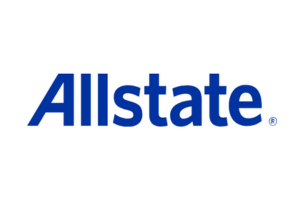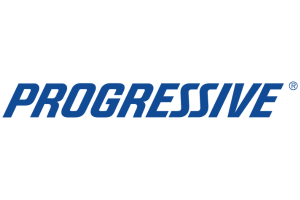What is cost sharing?
Learn about the impact of cost sharing on healthcare expenses in this insightful article. Discover how this practice affects individuals and explore strategies to manage and navigate the financial burden of medical treatments.
Read more Secured with SHA-256 Encryption






Find the Lowest Car Insurance Rates Today
Quote’s drivers have found rates as low as $42/month in the last few days!




Table of Contents
Table of Contents


Insurance Content Managing Editor
Daniel S. Young began his professional career as chief editor of The Chanticleer, a Jacksonville State University newspaper. He also contributed to The Anniston Star, a local newspaper in Alabama. Daniel holds a BA in Communication and is pursuing an MA in Journalism & Media Studies at the University of Alabama. With a strong desire to help others protect their investments, Daniel has writt...
Daniel S. Young


Licensed Insurance Producer
Dani Best has been a licensed insurance producer for nearly 10 years. Dani began her insurance career in a sales role with State Farm in 2014. During her time in sales, she graduated with her Bachelors in Psychology from Capella University and is currently earning her Masters in Marriage and Family Therapy. Since 2014, Dani has held and maintains licenses in Life, Disability, Property, and Casualt...
Dani Best
Updated January 2025
In the world of economics, cost sharing refers to the practice of multiple parties sharing the costs associated with a particular good or service. This concept is prevalent in various sectors, including healthcare and education, and plays a significant role in shaping economic policies and systems.
Understanding the Concept of Cost Sharing
The foundation of cost sharing lies in the idea of distributing the financial burden among different stakeholders. This approach is often employed to promote fairness and ensure that everyone involved has a stake in the costs incurred. By spreading the expenses, cost sharing aims to create a more balanced system and prevent any single party from bearing an unfair portion of the financial responsibility.
Definition and Basics of Cost Sharing
Cost sharing, as the name suggests, involves sharing the costs associated with a particular endeavor. This can include expenses such as equipment, infrastructure, or services. By sharing these costs, individuals or organizations involved contribute a portion of the total expenses, mitigating the financial burden on any single participant.
For example, in the context of a research project funded by multiple organizations, cost sharing may require each participating entity to contribute a certain percentage of the overall project cost. This ensures that the financial responsibility is not solely placed on one organization, promoting a fair distribution of expenses.
Furthermore, cost sharing can also be seen in the context of healthcare. In some countries with universal healthcare systems, individuals may be required to contribute a portion of the cost for certain medical treatments or medications. This approach helps to ensure that the burden of healthcare expenses is shared among the population, rather than solely relying on government funding.
The Importance of Cost Sharing in Economics
Cost sharing is a fundamental concept in economics that plays a crucial role in various aspects of society. It promotes equity and ensures that the costs associated with a specific endeavor are distributed among those who benefit from it or are involved in its implementation.
One of the main advantages of cost sharing is that it encourages collaboration and fosters a sense of collective responsibility. When multiple parties contribute to the financial aspect of a project, it creates a shared sense of ownership and commitment, increasing the likelihood of successful outcomes.
In addition to promoting fairness and collaboration, cost sharing also has economic benefits. By distributing the financial burden, cost sharing helps to prevent any one entity from shouldering an excessive amount of expenses. This can prevent financial strain and potential bankruptcy, allowing organizations to allocate their resources more effectively.
Moreover, cost sharing can also incentivize innovation and efficiency. When participants are required to contribute financially, they have a vested interest in ensuring that resources are used efficiently and effectively. This can lead to the development of innovative solutions and the optimization of processes, ultimately benefiting all parties involved.
Overall, cost sharing is a concept that goes beyond simply dividing expenses. It promotes fairness, collaboration, and economic stability. By spreading the financial burden, cost sharing creates a more balanced system that encourages participation and fosters a sense of collective responsibility.
Free Health Insurance Comparison
Compare Quotes From Top Companies and Save
Secured with SHA-256 Encryption
Different Types of Cost Sharing
Cost sharing can take various forms depending on the context and the goals of the initiative. Here, we explore some common types of cost sharing arrangements.
Cost sharing is a fundamental concept in many collaborative projects and initiatives. It allows multiple parties to pool their resources and share the financial burden of a project. By distributing the costs among different stakeholders, cost sharing promotes collaboration and ensures a more sustainable and equitable approach to funding.
Direct and Indirect Cost Sharing
Direct cost sharing involves the explicit sharing of specific expenses directly related to a project or activity. This can include costs such as materials, equipment, or personnel. For example, in a research project, direct cost sharing may involve the sharing of laboratory supplies or the hiring of additional research assistants.
Indirect cost sharing, on the other hand, involves sharing general overhead costs that support the overall project, such as administrative expenses or facility maintenance. These costs are often necessary for the successful implementation and management of a project but may not be directly tied to a specific activity. Indirect cost sharing ensures that these essential expenses are distributed among the participating parties.
Both direct and indirect cost sharing play crucial roles in ensuring the financial viability of a project. By sharing the expenses, the burden is distributed, making it more manageable for each participant. This approach also promotes transparency and accountability, as all parties involved have a clear understanding of the financial commitments.
Voluntary and Mandatory Cost Sharing
While some cost sharing arrangements are voluntary, wherein parties willingly choose to contribute, others may be mandatory. Voluntary cost sharing often arises in situations where organizations or individuals recognize the value and benefits of a project and willingly decide to contribute their resources.
On the other hand, mandatory cost sharing often arises in situations where public funding is involved, requiring recipients to provide a specified percentage of the project cost from non-federal sources. This ensures a more balanced distribution of financial responsibility and encourages commitment from all parties involved. Mandatory cost sharing is often seen in government-funded projects, where the goal is to leverage additional resources from non-governmental entities.
By making cost sharing mandatory, project organizers can ensure that all stakeholders have a vested interest in the project’s success. This approach fosters a sense of ownership and commitment, as each party has a financial stake in the outcome. It also helps to prevent free-riding, where some participants benefit from the project without contributing their fair share.
In conclusion, cost sharing is a vital mechanism for collaborative projects and initiatives. Whether it involves direct or indirect costs, or voluntary or mandatory contributions, cost sharing promotes financial sustainability, collaboration, and a more equitable distribution of resources. By understanding the different types of cost sharing arrangements, project organizers can design effective funding models that encourage participation and maximize the project’s impact.
The Role of Cost Sharing in Healthcare
In the healthcare sector, cost sharing plays a vital role in shaping the delivery of services and managing healthcare costs. Let’s delve into how cost sharing operates in the context of health insurance and its impact on patient care.
Cost sharing in health insurance refers to the sharing of medical expenses between the insurer and the insured. This typically involves deductibles, co-payments, and co-insurance, where the insured person is responsible for paying a portion of the healthcare costs out of pocket.
Deductibles require the insured individual to pay a specific amount before the insurance coverage begins. This initial payment can vary depending on the insurance plan. For example, some plans may have a low deductible, while others may have a high deductible. The purpose of a deductible is to encourage individuals to think twice before seeking medical attention for minor issues, thus helping to reduce unnecessary healthcare costs.
Co-payments, on the other hand, involve a fixed amount that the insured pays for each visit or service received. This fixed amount can vary depending on the type of service. For example, a visit to a primary care physician may have a lower co-payment than a visit to a specialist. Co-payments serve as a way to share the cost of healthcare services between the insurer and the insured, ensuring that both parties have a financial stake in the healthcare process.
Co-insurance refers to the percentage of medical expenses that the insured must pay after meeting the deductible. For example, if an individual has a 20% co-insurance, they would be responsible for paying 20% of the medical expenses, while the insurance company would cover the remaining 80%. Co-insurance helps to distribute the cost of healthcare services between the insurer and the insured, ensuring that both parties contribute to the overall expenses.
The Impact of Cost Sharing on Patient Care
While cost sharing can help control healthcare costs, it can also affect patient behavior and access to care. Higher out-of-pocket costs may deter individuals from seeking necessary medical attention, potentially leading to delayed intervention or inadequate care.
When faced with high deductibles, co-payments, and co-insurance, individuals may be more inclined to forgo or delay medical treatment, especially for non-emergency situations. This can have serious consequences, as it may lead to the progression of diseases or conditions that could have been treated more effectively if caught earlier.
Moreover, cost sharing may disproportionately burden individuals with chronic conditions or lower-income populations. For these individuals, high out-of-pocket costs can limit their ability to afford healthcare services, creating barriers to essential care and potentially exacerbating health disparities.
For example, someone with a chronic condition may require frequent doctor visits, medications, and specialized care. The cumulative cost of these services can quickly add up, making it difficult for individuals with limited financial resources to manage their healthcare expenses. As a result, they may be forced to make difficult choices between paying for healthcare and meeting other basic needs.
Furthermore, cost sharing can also impact the utilization of preventive services. When faced with high out-of-pocket costs, individuals may be less likely to undergo routine screenings or preventive care measures, such as vaccinations or cancer screenings. This can have long-term consequences, as preventive care is essential for early detection and intervention, potentially saving lives and reducing healthcare costs in the long run.
In conclusion, while cost sharing in healthcare can help control costs and encourage individuals to make more informed decisions about their healthcare utilization, it can also create barriers to access and potentially worsen health disparities. Striking the right balance between cost sharing and ensuring affordable and equitable access to care is crucial for promoting optimal patient outcomes and a sustainable healthcare system.
Cost Sharing in Education
Beyond healthcare, cost sharing also plays a significant role in the realm of education. Let’s explore how cost sharing is implemented in educational settings and its effects on accessibility.
The Concept of Tuition Sharing
Tuition sharing is a form of cost sharing commonly seen in higher education. In this model, students share the costs of their education with universities or other funding sources, reducing the financial burden on any single entity. Through tuition sharing, educational institutions distribute the cost of delivering quality education among the students benefiting from the programs.
The Effects of Cost Sharing on Educational Access
While tuition sharing can enhance access to education by reducing upfront costs, it can also present challenges for students from lower-income backgrounds. High tuition fees, even when shared, may still pose a barrier for individuals who cannot afford the remaining expenses. This can limit educational opportunities and perpetuate social inequalities.
Free Health Insurance Comparison
Compare Quotes From Top Companies and Save
Secured with SHA-256 Encryption
Pros and Cons of Cost Sharing
As with any economic concept, cost sharing has its advantages and disadvantages. Let’s explore some of the benefits and potential drawbacks associated with this approach.
The Benefits of Implementing Cost Sharing
Cost sharing promotes fairness and encourages broad participation, fostering a shared commitment to the success of a project or initiative. It can help distribute financial risk and ensure that the costs are spread among those who benefit from the outcomes, enhancing accountability and transparency.
Additionally, cost sharing can help control costs and prevent any single entity from shouldering an excessive financial burden. By distributing expenses, the financial strain on individuals or organizations can be mitigated, allowing for sustainable and long-term endeavors.
Potential Drawbacks and Criticisms of Cost Sharing
One of the primary concerns surrounding cost sharing is its potential impact on access to essential goods or services, such as healthcare or education. High out-of-pocket costs can hinder individuals from seeking necessary care or limit educational opportunities for those who cannot afford the shared expenses, potentially exacerbating societal inequalities.
Moreover, cost sharing may face challenges in cases where participants with greater financial resources can disproportionately influence decision-making, potentially skewing priorities or outcomes. Additionally, administrative complexities associated with managing cost sharing arrangements can introduce inefficiencies or create burdensome processes.
Conclusion
In conclusion, cost sharing is a fundamental concept in economics that involves the distribution of costs among multiple parties involved in a particular endeavor. Whether it’s in healthcare, education, or other sectors, cost sharing promotes fairness, collaboration, and accountability.
While cost sharing can contribute to the sustainability of projects and control expenses, it’s crucial to consider the potential impact on individuals’ access to essential goods and services. Striking a balance between cost distribution and equitable access is essential to ensure that cost sharing serves its intended purpose of creating a fair and inclusive society.
Frequently Asked Questions
What is cost sharing in insurance?
Cost sharing in insurance refers to the portion of healthcare expenses that policyholders are responsible for paying out of their own pockets. This can include deductibles, copayments, and coinsurance.
How does cost sharing work?
Cost sharing works by dividing the healthcare expenses between the insurance company and the policyholder. The policyholder is responsible for paying their share of the costs, which can vary depending on the specific insurance plan.
What are deductibles?
Deductibles are a type of cost sharing where the policyholder must pay a certain amount of money out of pocket before their insurance coverage kicks in. Once the deductible is met, the insurance company starts paying a portion of the healthcare costs.
What are copayments?
Copayments, or copays, are fixed amounts that policyholders must pay for certain healthcare services, such as doctor visits or prescription medications. The insurance company covers the remaining cost after the copayment is made.
What is coinsurance?
Coinsurance is a cost-sharing arrangement where the policyholder pays a percentage of the healthcare costs, while the insurance company covers the rest. For example, if the coinsurance is 20%, the policyholder pays 20% of the cost and the insurance company pays the remaining 80%.
How does cost sharing affect insurance premiums?
Cost sharing can impact insurance premiums. Generally, plans with lower cost sharing, such as higher deductibles or copayments, tend to have lower premiums. On the other hand, plans with lower cost sharing may have higher premiums since the insurance company is taking on more of the healthcare costs.
Get a FREE Quote in Minutes
Insurance rates change constantly — we help you stay ahead by making it easy to compare top options and save.
